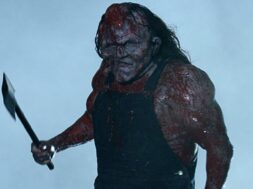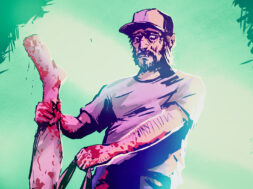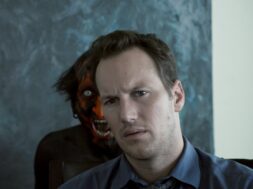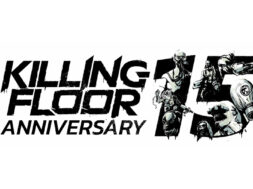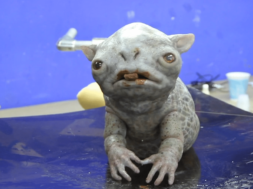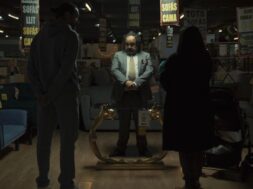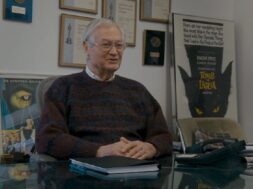Due to the highly collaborative and increasingly technical nature of game development, we don’t see that many auteur directors in the industry, especially where AAA titles are concerned. Even so, there is one name that stands as the exception, recognized even outside gaming. Naturally, I’m speaking of the man, the legend, Hideo Kojima. Whether or not you appreciate his highly cinematic style of game direction, there’s no denying his impact on the medium, and I for one admire his dedication to pushing gaming forward as an artform rather than playing it safe with established formulas.
From the Metal Gear Solid series to Zone of the Enders, this constant stream of creativity eventually landed Kojima right into the captain’s chair of Konami’s leading survival-horror franchise, Silent Hill. While some might find it odd that a designer known for action-heavy titles would be put in charge of the industry’s most memorable psychological-horror series, it’s worth remembering that Kojima never shied away from putting mind-screwing psychic agents, vengeful ghosts and even literal vampires in his epic war narratives (not to mention the copious amounts of John Carpenter references sprinkled throughout all his games), making him the ideal candidate for reviving the severely mistreated franchise.
And so, back in 2014, PSN saw the release of a mysterious free demo titled P.T. (Playable Teaser). The demo consisted of a self-contained first-person experience where players would explore a dreary suburban household while dealing with time loops, cryptic radio broadcasts, and a ghostly stalker. With the help of the internet’s collective brain, players eventually completed the game’s obtuse challenges and revealed that the demo was in fact a teaser for Kojima’s Silent Hills.
While we all know by now that the project didn’t work out and Kojima was fired before completing the game, we were given a brief glimpse at a project so revolutionary that it has since become one of gaming’s most notorious unreleased IPs. That’s why it’s only natural that when the newly-founded Kojima Productions announced Death Stranding in 2016, the internet scrambled to find connections between it and the ill-fated Silent Hills. Having finally completed Death Stranding, I’d like to take a look at these proposed connections and see if fans were actually on to something.

Watch out for Spoilers ahead!
For those who have been living under a well-insulated rock, Death Stranding is a post-apocalyptic adventure title that puts players in the well-worn shoes of Sam Porter Bridges, a deliveryman on a reluctant quest to reunite America after the rules which govern life and death have gone haywire. As players deliver packages and build structures in this devastated wasteland, they must also deal with ghostly B.T.s (stranded souls of the deceased that attempt to consume the living) and other humans that have gone mad from living in this bleak world.
It may initially appear that the only similarity between Death Stranding and Silent Hills is the involvement of the same power trio behind the games (Hideo Kojima, Guillermo del Toro and Norman Reedus), but astute gamers will eventually realize that both IPs share quite a bit more in common.
For instance, there are recurring characters named Lisa in both games (Clifford Unger’s braindead wife in Death Stranding and the vengeful spirit in P.T.), and both of them have babies that end up dying due to a tragic shooting. That’s not even mentioning the creepy use of fetuses as a way to advance the plot in both titles (through flashbacks in Death Stranding and literal narration in P.T.).
Of course, these are only surface-level similarities and could very well be subtle homages to a game that never got off the ground, but when you compare the main ideas permeating both titles, there are even more recurring concepts.

“Norman Reedus and the funky fetus” was destined to be.
For example, ghosts are an important part of the plot in both games. This is unusual for the Silent Hill series (with the exception of Silent Hill 4, a personal favorite) since these games usually rely on surreal monsters rather than spectral apparitions, but it’s clear that Kojima intended on exploring the more disturbing aspects of grief and a possible afterlife with both of these titles. Silent Hills’ 2014 TGS trailer even featured the ominous handprints that we now associate with approaching BTs in Death Stranding (though they were framed in blood instead of the mysterious black tar in this case) and teased even more unfortunate souls wandering the town.
And speaking of ghosts, the mythology behind Death Stranding’s afterlife is eerily reminiscent of classic Silent Hill lore. Again, for those who haven’t yet played the game, in Death Stranding, Kojima introduces the concept of “Beaches” early on in the story, explaining them as a sort of halfway point between the true afterlife and the living world. These beaches are unique to each person, functioning as a personalized pocket dimension (though if enough people die at once they can merge together into nightmarish monstrosities). This is very similar to Silent Hill‘s longstanding tradition of having the town transform in order to best reflect the nature of its visiting characters.
Back when Silent Hills was first revealed, it was widely rumored that the title actually referred to these many instances of the town, forever-changing according to the main character’s psyche. Hell, there were even some unsubstantiated claims that the game might feature some form of indirect multiplayer, similar to what we would eventually see in Death Stranding. With this in mind, the looping corridors of P.T. might as well be an unfortunate case of a tortured soul trapped in his own horrific version of The Beach, much like Cliff Unger’s eternal warzones as he pursues Sam Porter Bridges.
Again, much like Death Stranding, P.T. was also compared to “Walking Simulators” as it focused more on exploration and subtle narrative details rather than the action-packed gameplay of Kojima’s past work. There was even speculation that the completed Silent Hills would take on a more open-world approach as players explored the nightmarish landscape. There’s actually a bit of evidence supporting this, as modders have since revealed that an expansive (albeit unfinished) map of Silent Hill exists outside of P.T.‘s indoor areas.

A few rooms and corridors gave me nightmares, imagine an entire town!
In fact, over half a decade later and P.T. still has secrets to share, with modders still attempting to dissect the demo for more clues. Recently, it was discovered that the ghost of Lisa is actually invisibly attached to Norman Reedus’s character within the game, always lurking behind the player, just out of view. If the finished game had managed to be even half as interesting as the teaser, I’m confident that it would have been one of the greatest survival horror titles of all time.
Even so, this is all conjecture, so take these comparisons with a grain of salt. Kojima himself stated that P.T. was by no means a definitive reflection of the Silent Hills project, and that it was more like a stand-alone taste of things to come rather than a proper preview.
Additionally, despite discussing the similarities between these titles, I’m in no way implying that Death Stranding is simply an off-brand version of Kojima’s original vision for Silent Hills. As anyone who’s played the game will undoubtedly know by now, Death Stranding is its own thing, and a masterpiece at that. Nevertheless, I think some ideas are just too good to abandon in canceled projects, and it wouldn’t surprise me if some of the ingredients that would have made Silent Hills great were ultimately carried over to Death Stranding.
Of course, we’ll never know exactly how much these games had in common (unless Kojima or Konami decide to discuss the projects in public), but it’s fun to theorize about what might have been. For now, I can only hope that Konami’s newly announced ideas for a Silent Hill sequel can share at least some of the madly creative inspiration behind P.T., even if Kojima has moved on to bigger endeavors.
In the end, I agree with Norman Reedus when he said that he’s glad Silent Hills was canceled, as Kojima being fired from Konami set off a chain of events that made Death Stranding (and Kojima Productions’ future ground-breaking games) possible. So, if you’ll excuse me, I have roads and ziplines to place, because post-apocalyptic America isn’t going to rebuild itself.
